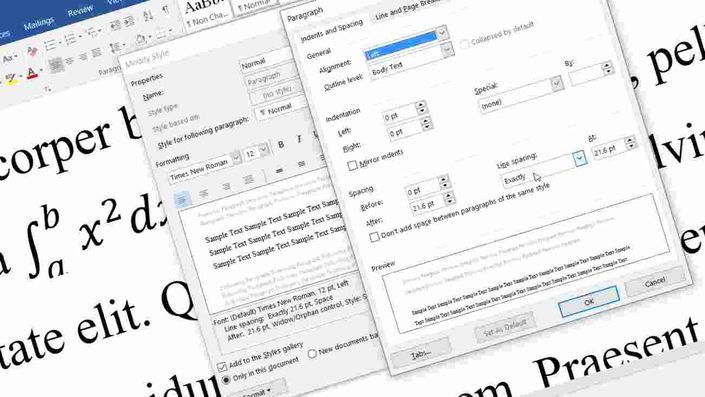
How to format your PhD thesis using Microsoft Word (Windows)
Create a professional looking thesis, without the headache
Please note: this course covers using word on Windows, not Mac. I plan to add a mac version soon.
Working with Word can be incredibly frustrating, especially when you're writing a very long document with references, tables, equations, figures, appendices, running heads and more
But if you know the right steps, and follow them carefully, you can produce a beautifully formatted document without feeling like you're fighting against the software.
This course will show you exactly:
- How to set up professional-looking typography and page design
- How to auto-number your chapters and sections
- How to add tables of contents, lists of figures and lists of tables
- How to add page numbers (and hide them or format them differently before the chapters start)
- How to add references using Word's built-in system, Zotero or EndNote
- How to add figures and captions (and make sure they stay where you put them)
- How to add simple tables with captions
- How to add tables spanning multiple pages
- How to add and auto-number equations
- How to add cross-references
- How to format quotes
- How to add and number appendices
- How to add running heads (with a different first page)
- How to add a title page
In addition to these specifics, you'll also learn:
- Basic principles of good thesis design
- How to avoid many of the most annoying common problems with Word
Making the formatting easy, so you can concentrate on your writing
You have enough to work on without stressing over formatting your thesis.
This course aims to make it as easy as possible to set up and modify your formatting (and make it look fantastic). It's also very easy to adapt the formatting to your own university's guidelines.
Why is Word so frustrating, anyway?
Because there are many different ways to achieve seemingly the same result, and Word behaves differently depending on which method you choose.
If you choose the wrong one, or if you are inconsistent in the way you do it, Word will punish you!
But if you know the right steps (and follow them carefully), it will be OK!
Ridiculous attention to detail
This course has been developed with exceptional (and slightly obsessive) attention to detail. Every single detail has been carefully thought through and tested. Nothing has been left to chance.
For example, we don't use centimetres or inches, but points as a measurement unit. This means we can proportion our line spacing and margins relative to the text size.
You don't need to worry about this, though; all you have to do is follow the steps!
Formatting for print, not just the screen
Your thesis will probably exist in both printed and electronic form. There are different things you need to consider for these two formats.
This has been factored into the course, so you can have one design that works for both formats.
Your Instructor

I'm James, I'm a former physicist (PhD, Nottingham, 2007) and author of "PhD: An Uncommon Guide to Research, Writing & PhD Life".
I now help PhD students all over the world overcome barriers in their research and writing.
Over the last 15 years, my strategies have helped thousands of PhD students just like you to build confidence, write better and finish on time.
Course Curriculum
-
PreviewHow to set the main body font by modifying the "normal" style (3:47)
-
PreviewHow to set up text alignment (1:38)
-
PreviewHow to set up line spacing (1:07)
-
StartWhy 21.6 pt?
-
StartHow to set spacing between paragraphs (1:34)
-
StartHow to indent the first line of each paragraph (3:20)
-
StartWidow & orphan control (2:16)
-
StartHow to set up page margins (4:51)
